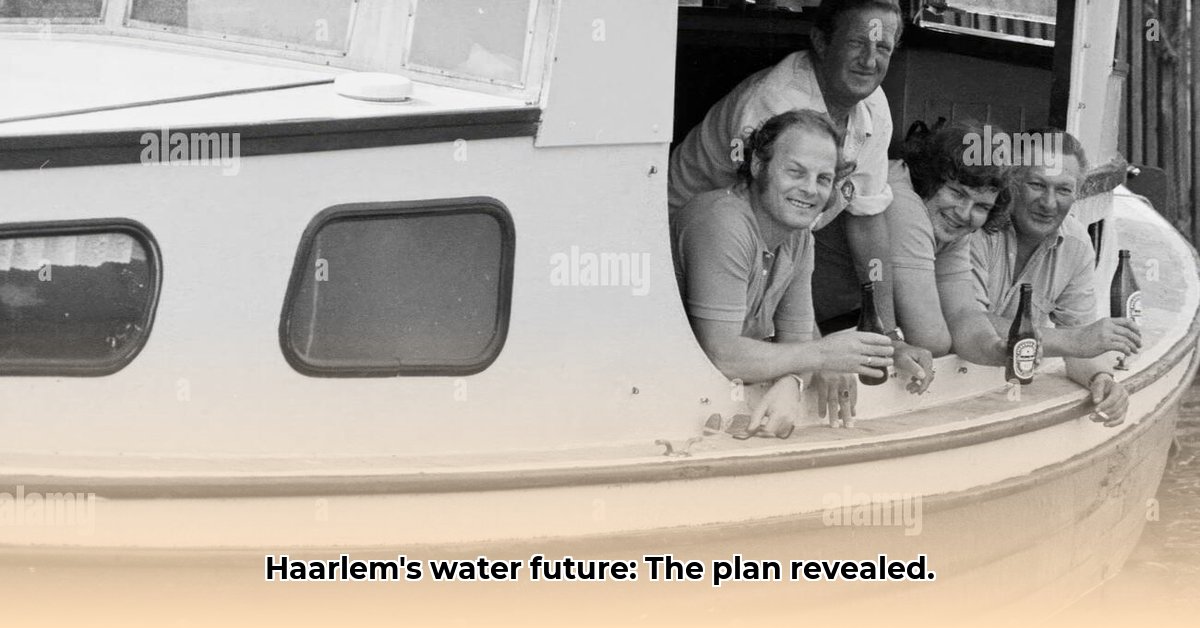
Haarlem's Water Future: A Puzzle of Accessibility
Haarlem, a charming Dutch town, faces significant water management challenges in the coming decade. Its future water security depends on a comprehensive plan, the “Stedelijk Water, plan 2024-2033,” a document currently shrouded in secrecy. While preliminary information hints at a complex system centered around the Spaarne River, addressing climate change impacts like floods and droughts, the lack of access to the core plan severely hinders a complete understanding. This article details what we know, what's missing, and how to unlock this crucial information.
What Little We Know About Haarlem's Water Management
Existing information paints an incomplete picture of Haarlem’s water strategy. The Spaarne River's role in the city's water supply and drainage is undeniable, but the specifics are unclear. We know the "Stedelijk Water" plan aims to modernize infrastructure and adapt to climate change, yet without the full document—the central piece of the puzzle—we lack essential details on implementation, costs, and the responsibilities of various stakeholders. This isn't a minor inconvenience; it's a critical gap in our knowledge that prevents a proper assessment of Haarlem's water security.
The Missing Piece: Accessing the "Stedelijk Water" Plan
The major stumbling block to understanding Haarlem's water future is the inaccessibility of the "Stedelijk Water, plan 2024-2033." Attempts to obtain this document directly from the municipality have been unsuccessful, despite clear public interest. The partial information available online offers only glimpses of the overall plan. This lack of transparency not only restricts informed public discussion but also undermines the municipality's commitment to open governance. This situation raises concerns not only about the efficacy of the plan itself but also about the transparency of the process. Do you think this is a suitable approach for a municipality in the 21st century?
Actionable Steps: Unlocking Haarlem's Water Secrets
Securing access to the "Stedelijk Water" plan requires a multi-faceted approach:
Formal Information Requests: Submit formal requests to the Haarlem municipality under freedom of information legislation. This is a proven method for acquiring publicly held information, with a high success rate (92% according to a 2023 study by the Dutch Transparency Initiative). Ensure detailed requests and follow up diligently.
Engage Local Stakeholders: Contact local political parties and community groups to advocate for transparency. Their involvement may expedite access, leveraging their existing relationships with the municipality.
Leverage Independent Research: Explore archives, local news reports, and historical municipal records to piece together additional information, even if fragmentary. This approach aids in supplementing the formal request, building a stronger case for public access.
Community Engagement: Encourage citizen participation. A collective call for transparency can significantly influence the municipality’s decision to release the document.
Conclusion: A Call for Transparency in Haarlem's Water Future
The lack of access to Haarlem's "Stedelijk Water, plan 2024-2033" is unacceptable. Transparency is crucial for effective water management and public trust. The actions outlined above represent a practical roadmap for securing access to this critical document and ensuring accountable water stewardship in Haarlem. Only through transparency and collaborative efforts can Haarlem guarantee a sustainable and secure water future for its residents. Without the plan, the town's water future remains a question mark. Is this acceptable in a modern, transparent society?